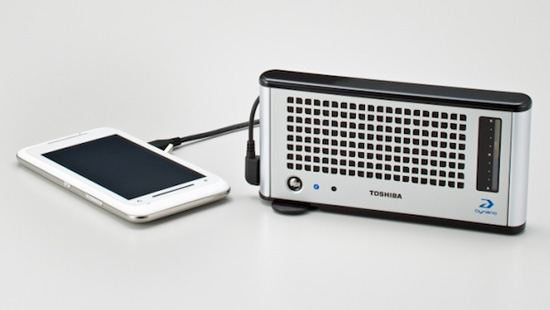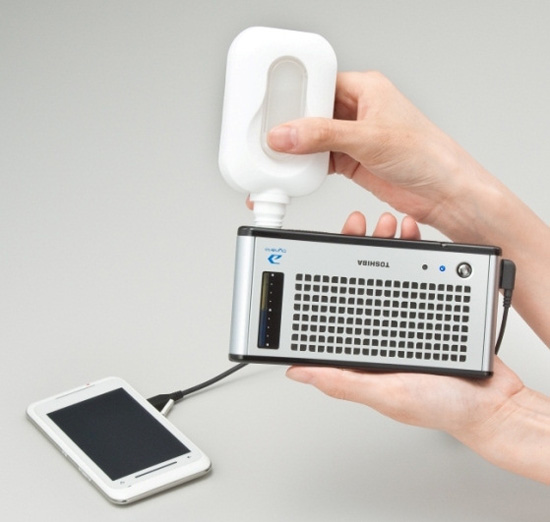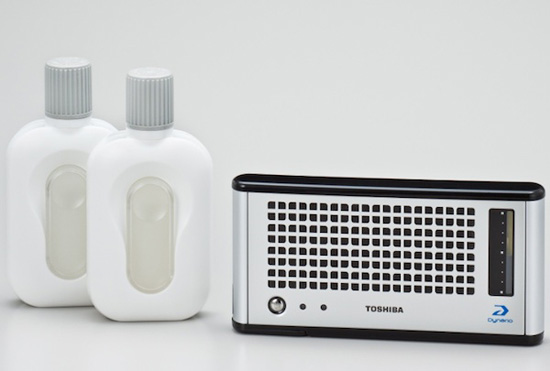
You might not hop in a car powered by a hydrogen fuel cell and drive to work until decades from now, but you can charge up your gadgets based on a different type of fuel cell in just a few days. After a long line of prototypes, Toshiba has finally released the Dynario, its first methanol-powered gadget charger.
Fill the Dynario with methanol – the same stuff powering dragsters, monster trucks and Indy cars – and it reacts with ambient oxygen in the air to produce electricity. Enough electricity, according to Toshiba, to charge two typical mobile phones.

The device itself looks almost like a thin tabletop radio, with a front grill punched in its metal enclosure and a capacity gauge to the side. It delivers the charge via USB. Methanol for the device comes in individual, flask-sized refills. (Not to be confused with a real flask, of course, because as Prohibition-era bootleggers often found out, drinking as little as 10ml can cause blindness.) Since the Dynario produces all its electricity within 20 seconds of adding methanol, it uses a “hybrid” design to store the energy in an internal lithium-ion battery to facilitate later charging.

Toshiba will produce only 3,000 of the chargers in its first manufacturing run in Japan, which is will sell directly through its Japanese online store, Shop1048. The charger will sell for the U.S. equivalent of about $325, while a set of five methanol fuel refills will go for $34. Preorders have opened immediately, but delivery won’t begin until October 29. More details can be found in Toshiba’s press release.



